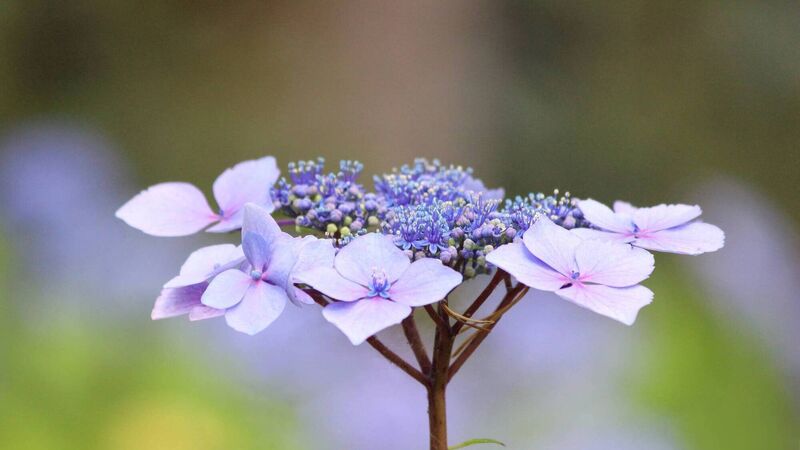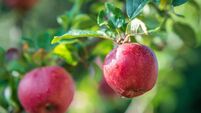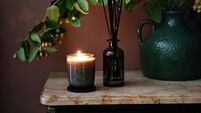Peter Dowdall: Why 'Magic Pillow' is the must-have hydrangea for shady spots and containers

Soon we will be able to enjoy hydrangea blooms in a ground-cover shrub. Picture: iStock
I LIKE to imagine the garden as a conversation, not just between me and the plants, but among the plants themselves, each with its own voice. So this week, I want to introduce you to Hydrangea Magic Pillow, a somewhat new member to that conversation, a gentle, low-mounded hydrangea that asks very little and offers so much in return.
What caught my eye was the idea that a hydrangea could work as groundcover, rather than towering behind borders; it sits in the foreground, a “pillow” of leaves and lacecap blooms that soften edges and offer a long season of interest. More than that, it offers the opportunity to gardeners who may not have space for a two-metre high and wide, traditional hydrangea, but still want some of that hydrangea magic in the garden.
This is very different in growth habit to traditional hydrangeas. Expect about 50cm in height and up to a metre in spread with maturity, forming gentle mounds. I use the word “expect” deliberately, as this is a relatively new introduction in the plant world, and I don’t yet have experience of it in maturity. Many nurseries describe it as a groundcover hydrangea, ideal for small borders, shaded corners, or even large containers, so we shall see.
Like all hydrangeas, Magic Pillow needs reliable moisture. For it to flower well and to maintain leaves that don’t dry out and go brown, it needs a soil that is moist but well-drained. In dry, poor soils, it will struggle.
Also, like most hydrangeas, it begins producing masses of pastel lacecap blooms from July onwards, and whilst it will grow in soils of varying pH levels, that pH will determine the flower colour. In acid soils, the blooms will be blue, and in alkaline or limey soils, they will bloom in a pink colour.
Because it’s compact, it’s also very suitable for container growing. A good-sized pot, filled with rich compost and kept moist, will suit it well, and it can brighten a shady corner for months. Just be sure to water regularly and mulch the surface, as pots dry out so much faster than beds and borders.
For planting partners, I’d look for plants which will offer a few different things: some to extend the flowering period and others to offer contrasting textures.
Picture a “pillow” of hydrangea in the front, framed by taller ferns behind, which will give a soft, feathery backdrop and be softened by grasses like Hakonechloa or Carex in front to add movement and lightness. In spring, bulbs like daffodils or alliums can be planted among them to give colour before the hydrangea comes into leaf.
Brunnera too, with its beautifully mottled leaves and blue flowers, will bloom before the hydrangea and wants to grow in similar conditions, so this could be a good choice to provide flower colour over a longer period in a shaded part of the garden.
In any garden, a shaded area can often be one of the hardest areas for which to choose plants and in particular, if you have a sloped bank or an inaccessible area which is difficult to maintain. Well, if this newbie lives up to its hype, it could really be a helpful and beautiful plant to have.
As the flowers begin to fade, Hydrangea Magic Pillow offers a second season of colour, which is every bit as beautiful. The foliage takes on rich autumn tones, shifting from fresh green into shades of red and deep purple that glow in the lower light of the season.
This change often starts while some of the lace-cap blooms are still hanging on, so you get a lovely overlap of soft, fading flowers set against leaves that are warming into colour. It means the plant doesn’t simply stop when the flowering is over but carries the colour with a new layer of interest, extending its value well into late autumn when many other shrubs have already gone to bed for the winter.
Magic Pillow is still very new, only appearing in nurseries in the last couple of seasons and garden centres this year. That means it doesn’t yet have decades of proven performance in every soil and climate, but it also means there’s excitement in trying something fresh, something that hasn’t been overused or seen in every garden yet.
Plant it now and you’ll be part of that story, watching it settle in and reveal its full potential.
For me, that’s the fun of trying new plants, not just relying on old favourites, but experimenting with newcomers that bring something different. If the plaudits and marketing are to be believed, then I have just found a hydrangea that will stay and cover the ground with summer blooms and autumn colour.









